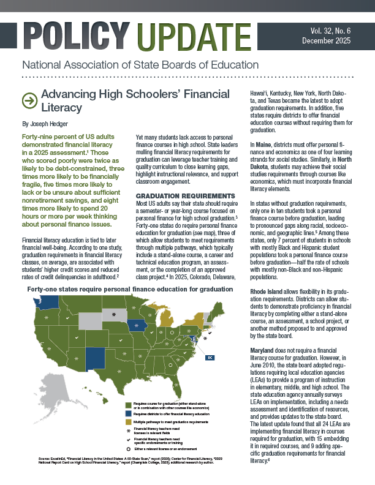Policy Updates
Advancing High Schoolers’ Financial Literacy
Forty-one states now require personal finance education for graduation. This analysis examines state financial literacy approaches and key drivers for success.Curbing Cell Phone Use in Classrooms
State boards are well positioned to create guardrails to help school districts make informed decisions on cell phone policies.
Gauging the Impact of Funds for Students Experiencing Homelessness
State boards can help drive improvements in programs serving students in unstable housing and ensure effective implementation.
Supporting Principals in the Science of Reading
State boards of education can deepen the impact of their literacy initiatives by ensuring that principals are equipped to implement schoolwide instructional changes.
Improving Bilingual Education for All Learners
State policymakers can unlock the full benefits of bilingual education by supporting dual language learners from an early age and expanding access for English-only speakers.
Expanding Access to K-12 High School Work-Based Learning
Several state boards are leveraging graduation requirements, diploma seals, specialized high schools, accountability systems, and aligning with business needs to expand work-based learning opportunities for more students.
State Education Elections in 2024 Yield Few Shifts
Voters in nine states, three territories, and the District of Columbia elected 64 state board candidates.
Strengthening Student Engagement and Adult Support
Many state boards of education reserve a seat at the board table for students. But representation is only the first step. Students need to be proactive and receive mentorship to be effective in their state board roles.
New State Strategic Plans Zero In on Learning Recovery
This NASBE analysis looks at 49 state strategic plans and finds many target learning recovery and other pandemic-related education issues.

